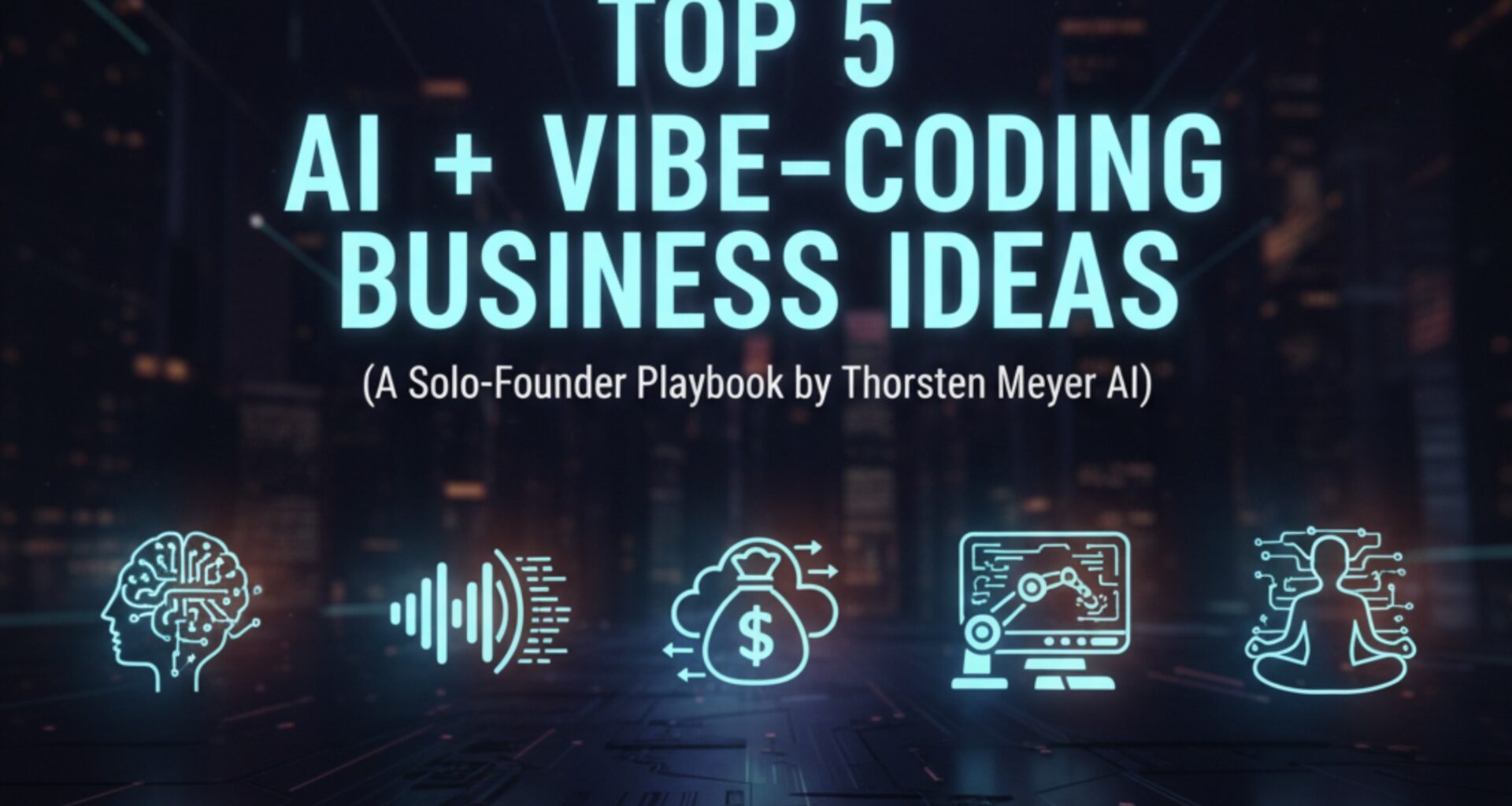How to turn brand “feel” into shippable software—and help entrepreneurs launch new services fast in today’s AI‑native market.

What I mean by “vibe coding”
Most tools get the function right and the feel wrong. “Vibe coding” is the discipline of codifying a brand’s personality—voice, pacing, aesthetics, risk tolerance, and values—into prompts, UI components, defaults, and guardrails so the product behaves like a consistent teammate, not a generic bot.
Concretely, vibe coding takes four inputs and turns them into product behavior:
- Voice DNA: examples of emails, landing pages, chat transcripts → a “brand voice map” (tone ladder, sentence length, taboo words, signature phrases).
- Context DNA: the jobs to be done, common edge cases, and red‑line errors.
- UX DNA: microcopy, button labels, error messages, and motion that match the brand’s tempo.
- Risk DNA: when to escalate to a human, require double‑confirm, or log for review.
When you ship with the right vibe, adoption is faster, support is lower, and retention is higher—because your AI feels like their AI.
The fast path: a 14‑day “Vibe → Value” loop
- Day 1–2: VibeSpec — Collect 10–20 artifacts (emails, proposals, help articles). Distill into: tone sliders, dos/don’ts, glossary, examples (good/bad), and compliance notes.
- Day 3–5: Data hooks — Minimal integrations, strongly typed schemas. Add human‑in‑the‑loop checkpoints.
- Day 6–8: Prompt pack — System prompts for analysis, generation, critique, and red‑team. Bake in voice guardrails and “refuse” rules.
- Day 9–11: Thin UI — One page, one big input, one confident output. Microcopy in brand style.
- Day 12–13: Pilot — 3–5 real users, watch sessions, tighten refusal/edge cases.
- Day 14: Pricing page — Ship. Book customer interviews for week 2 post‑launch.
Stack suggestion (keeps infra under $200/mo): Cloudflare Workers (or a $10 VPS) + SQLite/Postgres (Supabase/Neon free tier) + simple file/object storage + your model API of choice. Cache aggressively, chunk inputs, stream outputs, and log prompts/responses for improvement.
The 5 Business Ideas
Each idea includes: Who it’s for → Why it hurts → What to build → How vibe coding helps → MVP & stack → Pricing → First users → Risks & fixes.
1) Proposal & Scope Copilot for Small Agencies
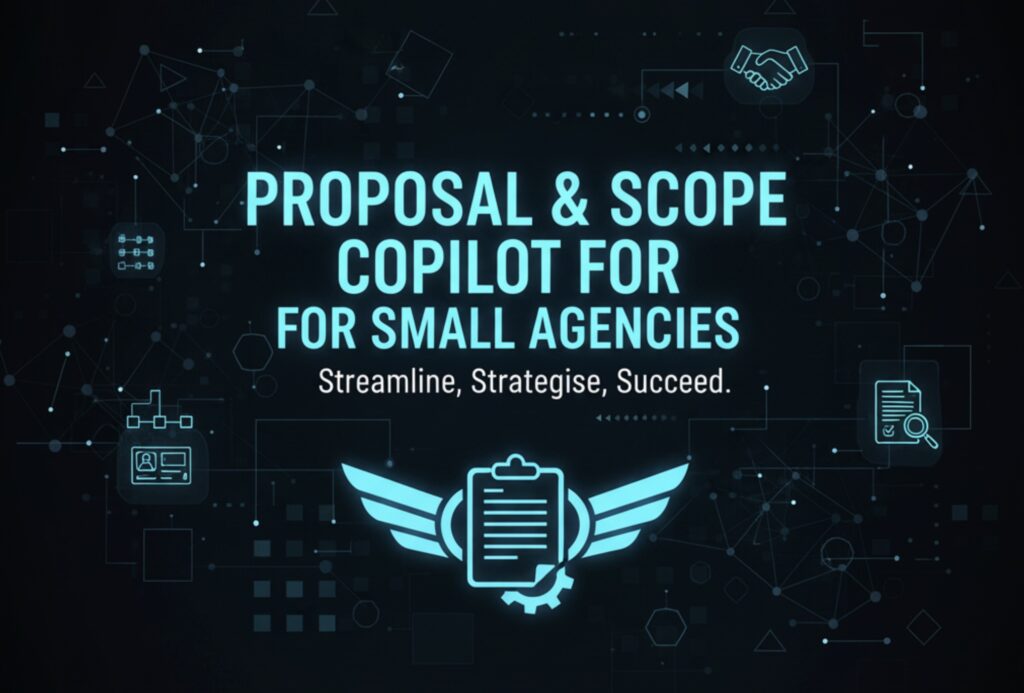
Who: Web/design/marketing consultants writing repetitive proposals and statements of work.
Why it hurts: High‑margin time gets burned rewriting the same scope, deliverables, and terms; brand voice consistency is hard across freelancers.
What to build:
A Proposal Copilot that ingests a client brief (or a few links), generates a vibe‑consistent proposal with deliverables, timeline, cost table, risks, and revision policy. Exports to Google Docs/Notion/PDF; tracks acceptance and pushes e‑signature.
How vibe coding helps:
- Voice DNA keeps proposals “on brand” (confident vs. collaborative).
- Risk DNA injects non‑negotiables (payment terms, IP, revision caps).
- UX DNA sets defaults that match the studio’s tempo (e.g., “ship weekly” vs. “milestone‑based”).
MVP & stack:
- Inputs: client URL(s), short form (“goals, budget range”).
- Outputs: proposal body + cost table + cover letter + one‑page SoW.
- Stack: Workers or a small Flask/Express app; Supabase (auth + tables); Stripe Checkout for signature/paywall; Docs export via HTML‑to‑PDF.
- Models: one general LLM; optional small embedding index for past proposals.
Pricing: $29–$99/mo per agency; $9/proposal pay‑as‑you‑go.
First users: Indie Hackers, design Twitter/X, Upwork/Contra pros with repeat scopes.
Risks & fixes: Hallucinated promises → Guardrail: “No new deliverables unless explicitly included in inputs.” Include a non‑binding estimate clause template.
2) Sales Inbox “Brand‑Voice” Reply Assistant (Compliant Outreach)
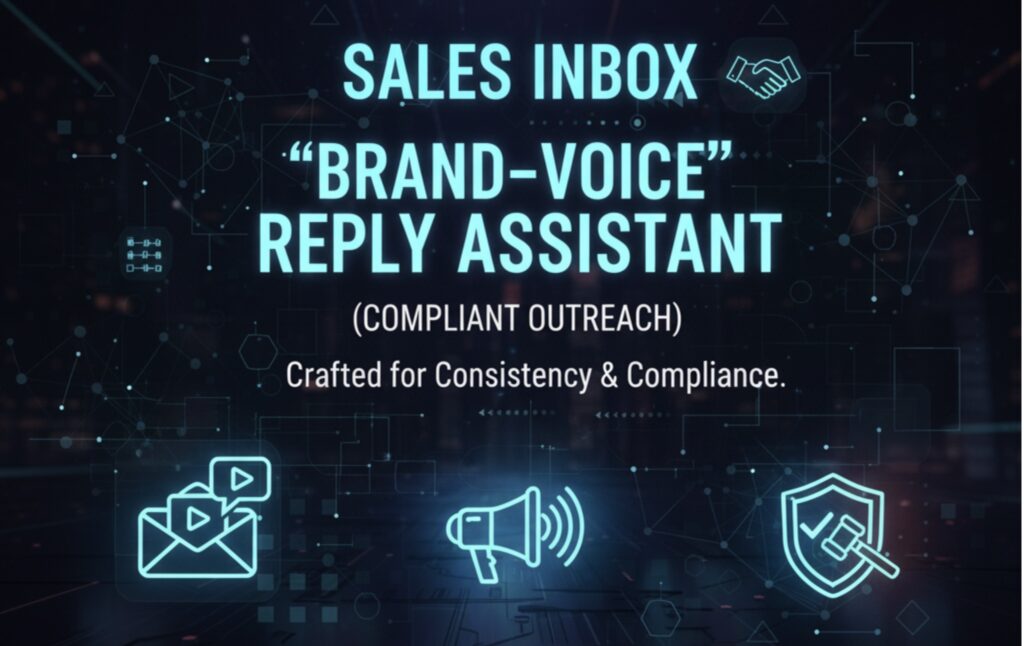
Who: Solo founders and small sales teams doing cold/warm email at low volumes.
Why it hurts: Deliverability rules tightened; templated replies feel robotic; founders need fast, on‑brand responses that stay compliant.
What to build:
A Reply Assistant that sits on top of Gmail/Outlook, drafts brand‑voice‑aligned replies with mandatory compliance: one‑click unsubscribe, respectful tone, no bait‑and‑switch, correct signature/titles. Learns from the founder’s sent mail.
How vibe coding helps:
- Voice DNA from 20–30 sent emails; builds a personal cadence (short/long, formal/casual).
- Risk DNA enforces opt‑out links and avoids risky claims.
- UX DNA reduces friction: keyboard shortcut to “Draft reply → Review → Send.”
MVP & stack:
- Read‑only mail access + “create draft” scope; store only embeddings and meta, not raw emails (privacy).
- Templates: “booking reply,” “pricing nudge,” “lost deal follow‑up.”
- Stack: OAuth + serverless; light vector search (FAISS/pgvector); browser extension optional.
- Add a compliance checklist in the sidebar.
Pricing: $19/mo per inbox; founder pack $39/mo for 3 inboxes.
First users: Founder communities, revops Slack groups, boutique agencies.
Risks & fixes: Sending mistakes → Draft‑only first; explicit human send. Add a “red text” layer flagging risky sentences before sending.
3) Onboarding & SOP Vibe Studio (Turn Docs into Guided Flows)
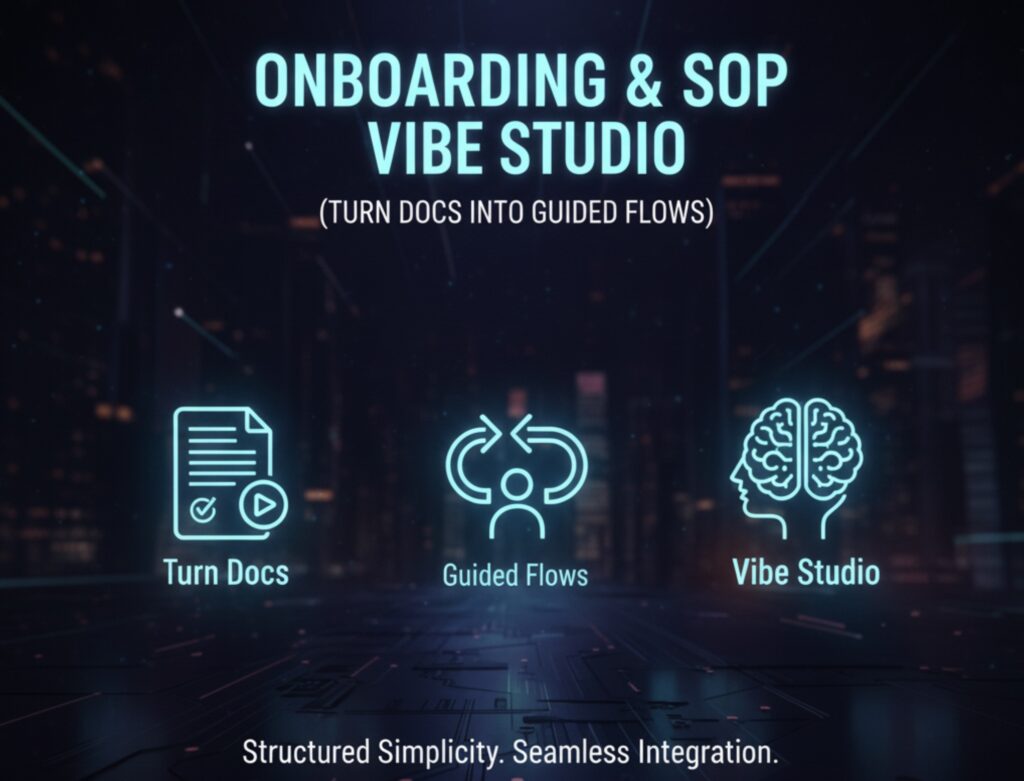
Who: SaaS startups and agencies with scattered onboarding docs and SOPs.
Why it hurts: New hires and clients ask the same questions; static docs go stale; support tickets pile up.
What to build:
An Onboarding Studio that ingests docs, Loom videos, and checklists, then generates guided, interactive flows: step‑by‑step tasks with auto‑answers, gated by confirmations or file uploads. Each customer gets a “playbook portal” in their brand voice.
How vibe coding helps:
- Voice DNA ensures walkthroughs sound like you, not generic help text.
- Risk DNA gates dangerous steps (“confirm backup created” before “migrate”).
- UX DNA sets tone (encouraging vs. strict) and microcopy consistency.
MVP & stack:
- Upload docs/links → choose a template (“Client Kickoff,” “New Hire Day 1”).
- Output: a hosted checklist with inline answers, code snippets, and “ask” box.
- Stack: Headless Next.js + Supabase auth; file store; LLM for chunked QA; h‑in‑the‑loop to approve each checklist before publishing.
Pricing: $49–$149/mo per workspace; $10/guest overage.
First users: Agencies with >5 clients/month, B2B SaaS with complex setup.
Risks & fixes: Outdated steps → add staleness pings: “This step hasn’t been confirmed in 60 days.”
4) Review & Community Radar (Voice‑of‑Customer, Actually Actionable)
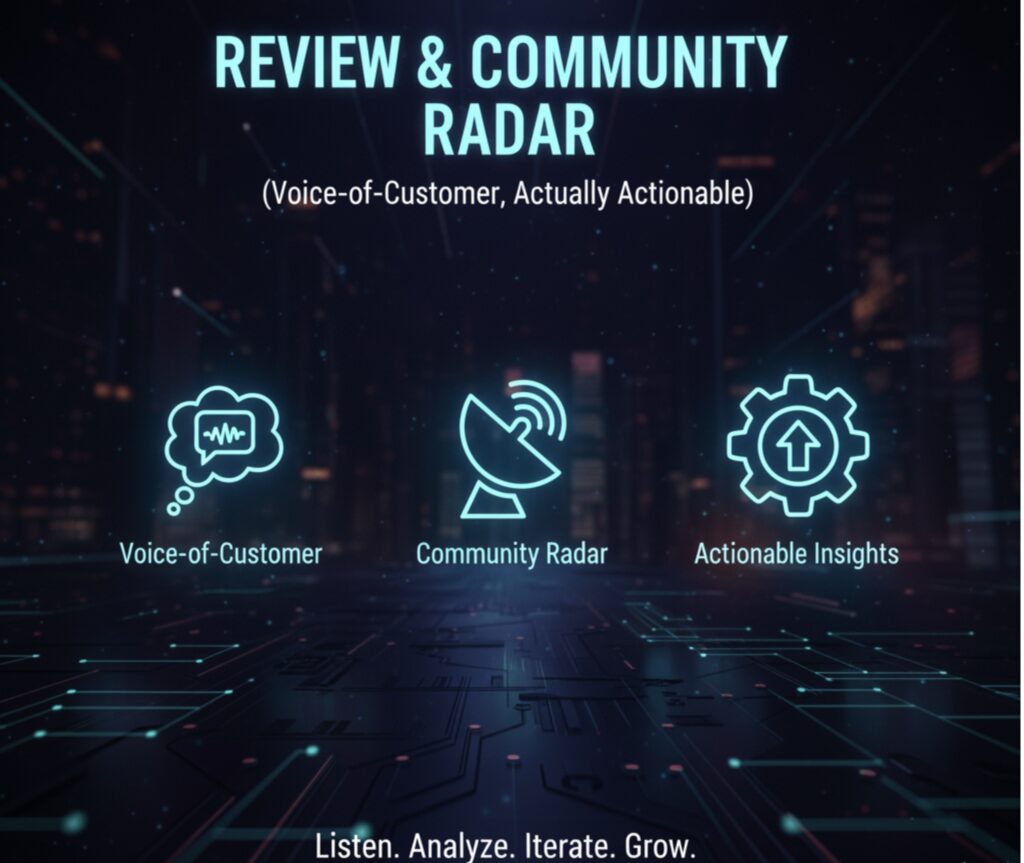
Who: DTC brands, indie SaaS, and app developers who live or die by reviews and community chatter.
Why it hurts: Useful feedback is buried across Reddit, app stores, GitHub issues, Discords. People know there’s signal, but it’s noisy.
What to build:
A Radar that watches chosen sources for your product/competitors, clusters complaints/requests, and outputs vibe‑consistent weekly briefs: “Top 3 complaints,” “Top 3 delight moments,” “Exact wording you should mirror,” links included.
How vibe coding helps:
- Voice DNA crafts summaries the team will actually read (blunt vs. diplomatic).
- UX DNA highlights “what to change” and “what to say back” in brand tone.
- Risk DNA suppresses toxic quotes, flags legal or safety issues.
MVP & stack:
- Source connectors (RSS, basic scrapers, app‑store APIs).
- Pipeline: Fetch → dedupe → cluster → summarize → recommendations.
- Output: one page + weekly email.
- Stack: cron jobs + lightweight DB; cosine clustering with embeddings; LLM summaries with strict templates.
Pricing: $29–$99/mo based on sources and volume.
First users: Indie devs on Product Hunt, Shopify app makers, mobile devs.
Risks & fixes: Scraping breakage → start with opt‑in sources and public APIs; allow users to paste threads manually at first.
5) “Deskless Ops” Extractor: Turn Semi‑Structured PDFs & Emails into Clean Rows
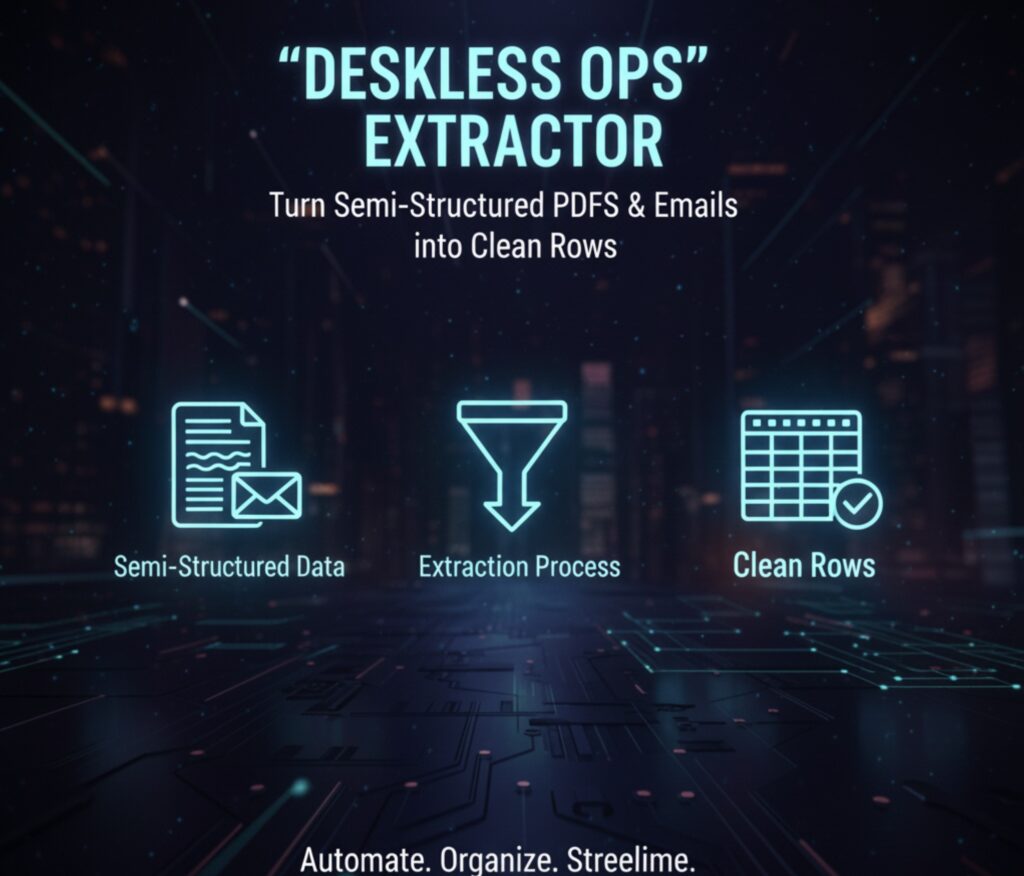
Who: Small logistics, field services, finance back offices—any team drowning in invoices, purchase orders, shipping labels, or time sheets.
Why it hurts: Manual copy‑paste is slow and error‑prone; traditional OCR struggles with messy layouts; custom RPA is overkill.
What to build:
A Document Extractor that converts semi‑structured PDFs/emails into rows (CSV/API), checks totals and dates, and drafts a polite vendor email if fields are missing—in the company’s voice.
How vibe coding helps:
- Voice DNA ensures vendor emails and internal notes match company tone.
- Risk DNA forces double‑confirm for payments or totals mismatches.
- UX DNA uses clear “green/red” states and speaks the shop floor’s language.
MVP & stack:
- Upload PDF or forward an email to a unique address.
- LLM‑assisted extraction + regex validation + checksum logic.
- Output: rows + confidence score + “Ask vendor for X” draft.
- Stack: inbox webhook + object storage + small DB + LLM for parse/repair.
Pricing: $0.10–$0.50/document + $49/mo base; bundle with the Onboarding Studio for operational teams.
First users: Local services (HVAC, freight brokers), indie accountants.
Risks & fixes: Edge‑case documents → add per‑customer extraction presets and human correction UI; learn and lock.
The Vibe Coding Toolkit (copy/paste into your backlog)

1) VibeSpec (one page):
- Tone sliders: formal ↔ playful, concise ↔ narrative, cautious ↔ bold.
- Sentence rules: avg. 12–16 words; avoid exclamation marks; prefer active voice.
- Taboos: never say “guarantee,” “unlimited,” or “we promise.”
- Phrases to mirror: “ship fast,” “open the loop,” “paper trail.”
- Formatting: Title Case in headings; bulleted lists over paragraphs.
- Escalation rules: money, data deletion, legal → human required.
- Compliance add‑ons: unsubscribe line, pricing disclaimers, jurisdiction clause.
- Examples: 5 good replies + 3 “do not do this” counter‑examples.
2) Prompt pack (four layers):
- Analyzer: extract facts, intent, constraints.
- Generator: produce draft strictly constrained by VibeSpec.
- Critic: compare to VibeSpec and highlight violations.
- Red‑team: search for risky promises, legal exposure, or sensitive data.
3) Evaluation set:
- 20 inputs with “gold” outputs; a CLI that scores tone match, taboo words, and structure. Ship this before you add features.
4) Guardrails:
- Refuse if inputs lack permissions or exceed risk threshold.
- Never invent deliverables, discounts, or legal terms.
- Surface confidence scores; default to “ask for clarification” when low.
How this helps entrepreneurs launch new services—fast
- Faster time‑to‑trust. Buyers adopt tools that “sound like us.” Vibe coding reduces the trust gap you usually slog through in onboarding and early support.
- Shorter sales cycles. A proposal written in a client’s tone with clear risks/next steps gets accepted sooner than a generic template. Your users close faster—they’ll pay for that.
- Lower support burden. When microcopy matches the user’s expectations (tone + clarity + defaults), ticket volume drops. Your CAC payback improves.
- Defensible differentiation. Features can be cloned; institutionalized voice is harder to copy because it’s rooted in a customer’s own artifacts and workflows.
- Higher net retention. Once a team’s voice, workflows, and risk rules live in your tool, churn gets sticky. That’s real moat for a solo founder.
Practical launch notes (solo‑dev reality)
- One thin slice per idea. Don’t build “docs → flows → LMS.” Pick one high‑value flow (e.g., “Client Kickoff”) and own it.
- Default to draft mode. Let the AI create drafts; make humans click “Accept & Send.” It prevents catastrophic errors and builds user confidence.
- Metrics that matter:
- Activation: first successful draft sent or first checklist completed.
- Time saved: minutes from input to accepted output.
- Retention proxy: # of drafts/checklists per week per seat.
- Pricing that fits value: Start at $29–$49/mo; add usage‑based overage where there’s real marginal cost (docs processed, sources monitored).
- Distribution: Ship a crisp demo video and three before/after examples. Post to founder communities, and offer a “white‑glove vibes session” for the first 10 customers.
Sample VibeSpec prompt (drop‑in)
System: You are the brand voice of Acme Studio. Tone: confident, friendly, concise. Average sentence length 12–16 words. Avoid “guarantee,” “unlimited,” and exclamation points. Prefer bullet points over paragraphs. Always include a clear “next step.” Escalate pricing changes to a human.
User: Draft a reply to a prospect asking for a detailed scope and price for a 3‑page website redesign. Use our standard revision policy (2 rounds) and 50% upfront. Close with a calendly link and a 5‑day validity note.
Test, score, and iterate until it sounds like Acme every time.
Closing
The “current DNA” of software is data + nuance + automation. AI gives you automation and summarization; vibe coding adds nuance, turning outputs into believable artifacts your users can send, sign, or ship without rewrites.
Pick one of the five ideas, carve a single thin slice, and run the 14‑day loop. When you ship something that thinks and sounds like your customer, you won’t just be building software—you’ll be building momentum.
